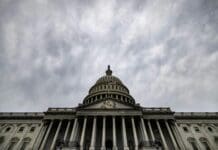The weekly jobless claims in the United States have fallen by about 24,000 to 400,000 for the week that ended on July 24, according to new data from the Labor Department. This comes only a week after jobless claims raised for the week of July 17. These new reports also come amid new data released about the overall state of the U.S. economy in the second quarter, which has grown.
Economists previously forecasted that the week that ended July 24 would see about 380,000 weekly jobless claims — so the final numbers are still higher than initial forecasts. However, the claims have begun to go down again, which is expected. As the economy adjusts throughout the changing COVID-19 pandemic, it’s expected that weekly jobless claims numbers may continue to fluctuate, even as the economy grows.
The Commerce Department revealed through a new report that the gross domestic product increased at about a 6.5% annualized rate for the second quarter. While this rate is lower than the estimated 8.5% that many economists had originally forecasted, the economy is still steadily growing.
So, the economy seems to be in good shape for the second quarter, even with the rise in jobless claims the week of July 17. If jobless claims continue to go down — as this latest week has — then the economy could have more room to grow. For a healthy economy, jobless claims tend to go no higher than 250,000.
Economist still have some worries about the future, as there are many problems that haven’t yet been solved because of the COVID-19 pandemic. For example, many businesses are still attempting to deal with massive labor and raw material shortages nationwide. While job hirings have seemed to go up in the last few months, there are still a lot of people who haven’t rejoined the workforce since being laid off last year.
However, many analysts expect more hirings to occur later in the summer and into the winter of 2021. Raw materials may continue to face shortages, which may result in continued price surges for various goods and services. Many businesses worldwide are also attempting to deal with global supply chain problems that have left their inventories scarce.
While the economy has grown for the second quarter, growth more than likely won’t hit the rates it did during this quarter. The economy will still grow, yet not as it previously did. However, if some of this issues work themselves out — or if weekly jobless claims continue to drastically lower — than the economy could experience more growth towards the end of the year.
Analysts are also keeping a close eye on the new Delta variant strain of the COVID-19 virus which has caused infections to surge nationwide. While many economists don’t foresee massive closures and lockdowns like many experienced in 2020, regulations could be put back into place to help combat virus spread — which could also affect the economy as the year comes to an end.













